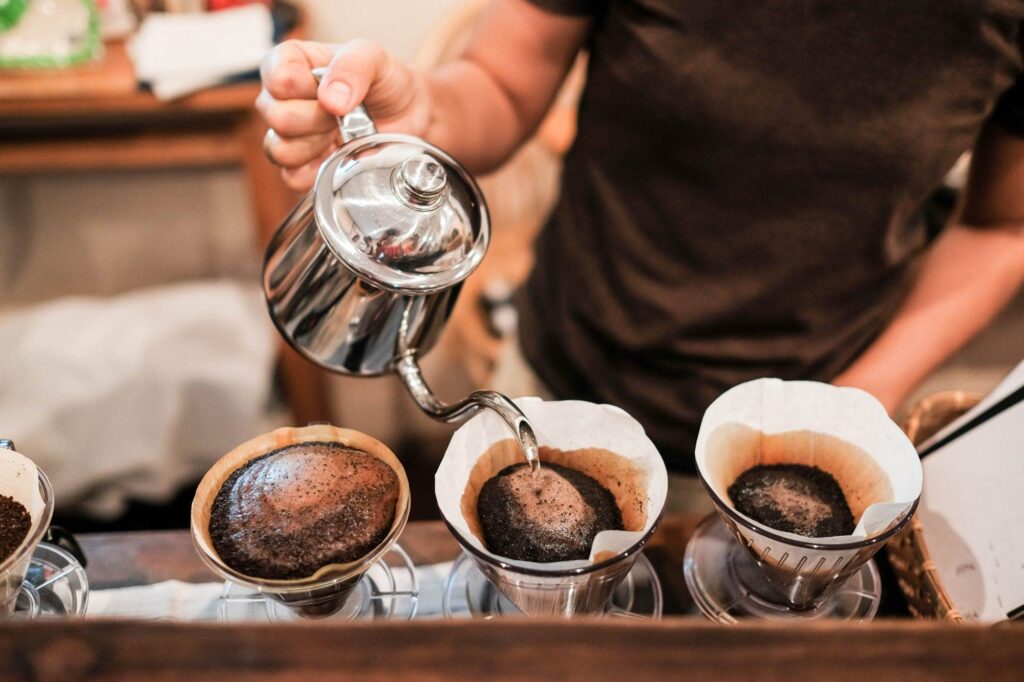The Science Behind Crafting the Ideal Pour-Over Coffee: A Fusion of Art and Physics
In an era where coffee lovers are dedicated to perfecting their brews, pour-over coffee has emerged as a sophisticated blend of artistry and scientific precision. Each careful pour of hot water over freshly ground beans initiates a series of chemical reactions that significantly impact flavor, aroma, and overall satisfaction. This intersection between culinary enthusiasm and scientific exploration is reshaping our understanding of this cherished morning ritual. As enthusiasts experiment with various factors such as water temperature, grind size, and brewing duration, both researchers and baristas are investigating the underlying physics that can transform an ordinary cup into an extraordinary sensory experience. In this article, we will explore the delicate balance between technique and theory that characterizes pour-over coffee.
The Physics of Coffee Extraction Rates
At the core of the pour-over process lies a complex interaction between physics and chemistry—particularly in how different variables affect coffee extraction rates. One key factor is grind size, which dictates the surface area available for extraction. Finer grinds expose more surface area for quicker extraction while coarser grinds slow down this process. This aspect is crucial; over-extraction can lead to unpleasant bitterness while under-extraction often results in sour notes. Additionally, water temperature plays a vital role; hotter water extracts flavors more efficiently but excessive heat can scorch the coffee beans, disrupting their delicate flavor balance.
The flow rate during brewing also significantly influences taste outcomes. A slower pouring method allows for uniform extraction resulting in richer flavors whereas rapid pouring may cause uneven results. Moreover, maintaining an appropriate coffee-to-water ratio is essential; higher ratios yield stronger brews while lower ratios may produce weaker cups. The table below illustrates how grind size correlates with water temperature and optimal extraction time:
| Grind Size | Water Temperature (°F) | Sought-After Extraction Time (minutes) |
|---|---|---|
| Coarse | 200°F (93°C) | 4-5 minutes |
| Medium | 205°F (96°C) | 3-4 minutes |
| Fine | 210°F (99°C) | 2-3 minutes |
Impact of Brewing Temperature on Flavor Profile
The temperature at which you brew your coffee is critical as it greatly affects flavor extraction during brewing—ultimately shaping your final cup’s profile. Generally speaking, ideal brewing temperatures range from195°F to 205°F strong >(90°C to 96°C). Within this range ,water effectively extracts aromatic compounds without introducing undesirable bitterness .Conversely ,brewing at lower temperatures often leads to under-extraction resulting in weak or sour flavors ,while exceeding temperatures above205 °F risks extracting excessive tannins leading to overly bitter profiles. p >
Diving deeper into how varying temperatures influence your tasting experience reveals distinct flavor notes extracted at different ranges:
| Temperature(°F) | Flavor Notes |
|---|---|
| Bright Fruity Acidity | |
| Sweet Floral Notes | |
| B alanced Smoothness | |
| C hocolatey Richness | |
| Pour Technique | Poured Impact on Extraction |
|---|
